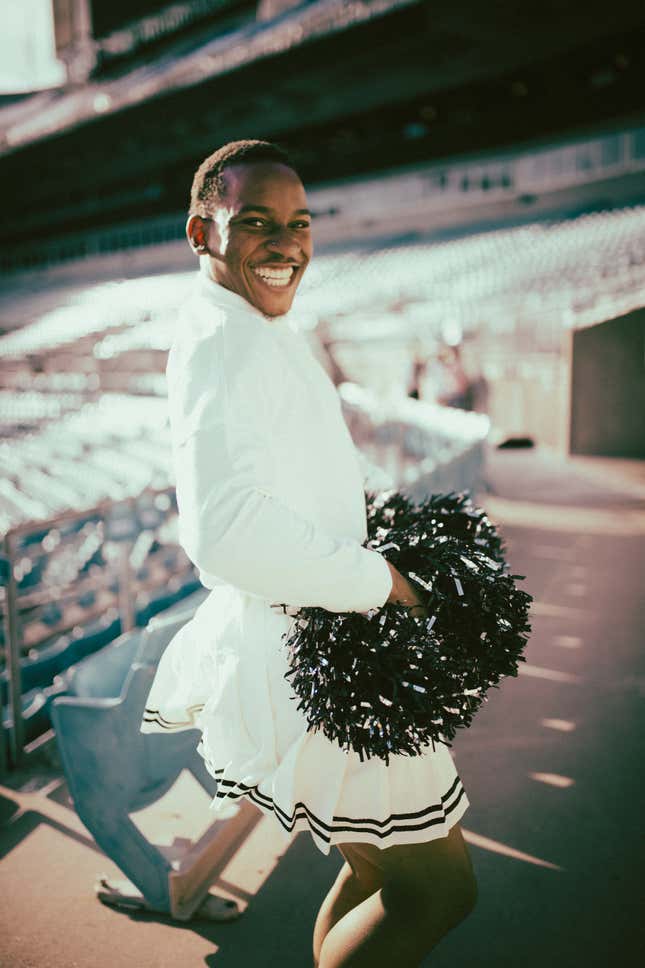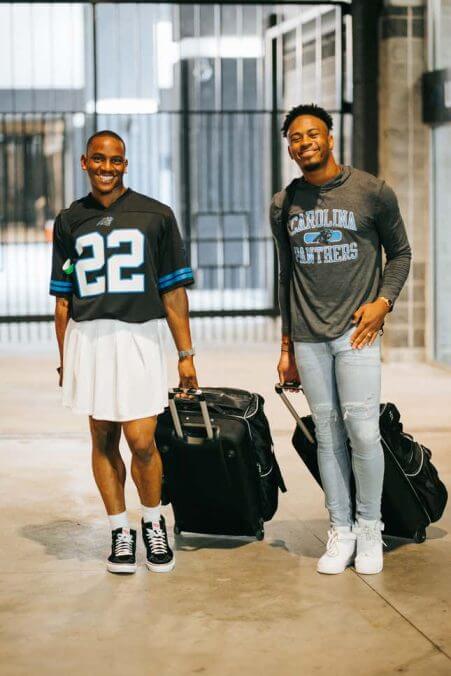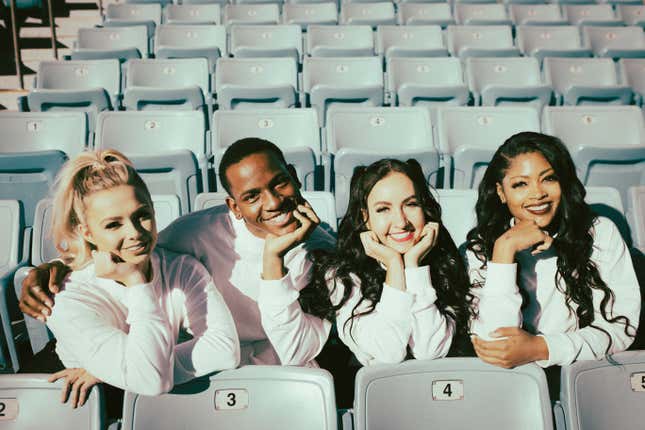Chris Crawford Is Changing NFL Cheerleading, Whether Football Fans Like It or Not
He's one of the first men to join the Carolina Panthers' cheerleading squad, TopCats.
In Depth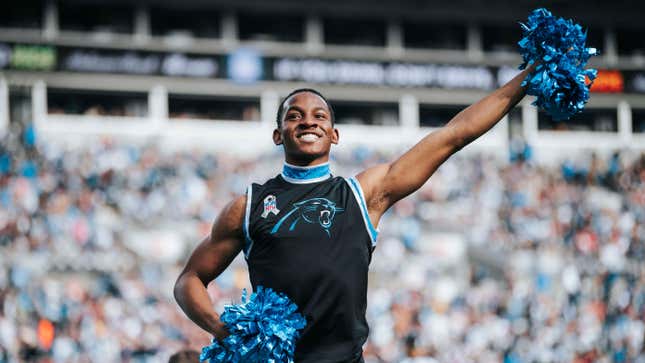

It’s Pride month, and for the NFL that typically means it’s time to splash a fresh coat of rainbow paint over the shield, publicize partnerships between LGBTQ+ organizers and the league’s first and only player to come out while in the NFL (though he is not currently employed by the league), and cash in on queer fans’ loyalty with Pride-themed games. For a league that’s facing constant revelations of misogyny and discrimination, the once-a-year celebration of queer people in the NFL has, regardless of good intentions, often felt more like a farce than a genuine tribute.
But there’s a different story unfolding in the South—one that subverts (or, at least, lessens the blow of) the threats to pregnant, queer, and trans people’s rights across the country and especially in southern states. The TopCats, the official cheerleading squad of the Carolina Panthers, have quietly become one of the most progressive organizations in the NFL. As one of the many faces of the team, Chris Crawford, a 23-year-old Black gay male who slides between femininity and masculinity as he pleases, is doing a hell of a lot of heavy lifting for gender identity diversity within a league that has glorified the gender binary since its inception. Crawford doesn’t care whether fans are ready for people like him to appear on their televisions and in their stadiums, because unabashed gender expression like his is the future. And the future, apparently, is the Carolina TopCats.
Crawford, who grew up in Macon, Georgia, started dancing in middle school and became a classically trained concert dancer, studying contemporary and ballet at the University of North Carolina School of the Arts. He loved cheerleading but didn’t see it as a realistic path after high school. In fact, he told Jezebel, he never had any intentions of becoming an NFL cheerleader until after he graduated college and realized his journey as a “little brown boy” who wanted to cheer wasn’t over yet.
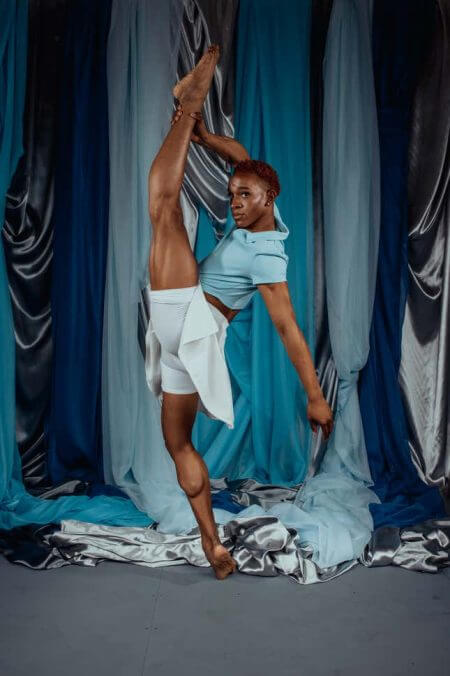
When Crawford showed up to the TopCat auditions in 2021 with now-teammate Tre’ Booker, he knew his chances were slim. No men had ever made the cut for the TopCats, though there’s been a spike in co-ed cheerleading squads in the NFL over the last five years. But Crawford and Booker became part of the first group of male cheerleaders on the Carolina squad, and Crawford, who auditioned in spandex shorts and his signature earrings, began challenging gender norms from the moment he stepped onto the sidelines.
As an organization, the TopCats has clearly given Crawford the space to be himself. On any given day, he might wear long, claw-like acrylic nails; a sports bra that matches those of his women teammates; more conservative tank tops; baggy, rhinestone-covered athletic pants; or false lashes. While Crawford identifies as a man, the manner in which he expresses his gender is fluid, depending on the day, his emotions, and the environment.
“I typically lean more into my feminine side just because growing up it was something I was always told had to be put in a box. It was something that had to be locked up: Guys don’t do this, guys don’t do that,” Crawford said. “Now I’m in a space where I’m surrounded by people that love the fact that this is who I genuinely am.”
-

-

-

-

-

-

-

-

-

-

-

-

-

-

-

-

-

-

-

-

-

-

-

-

-

-

-

-

-

-

-

-

-

-

-

-

-

-

-

-

